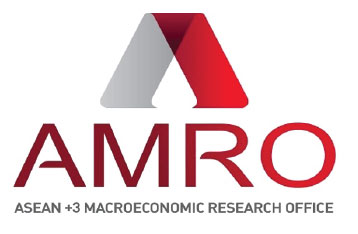As the year ends, it is natural to pause, reflect, and recalibrate. AMRO’s 2025 Annual Consultation Report (ACR) does exactly that. It reviews how the Philippine economy navigated a challenging year and outlines what lies ahead for 2026.
The bottom line: the near-term outlook remains broadly stable, but the medium-term picture is more complex. Structural bottlenecks continue to weigh on potential growth. Here’s what stands out.
1. The near-term growth outlook remains steady despite recent headwinds.
The economy stumbled in the third quarter. Growth came in weaker than expected, and the peso lost ground. Several temporary disruptions were to blame. Public infrastructure projects were halted amid corruption allegations. Severe weather dampened household spending. Global financial volatility added pressure.
These factors dampened sentiment and contributed to currency weakness. But there are also positive developments. Inflation has fallen sharply. The labor market is still improving. Private consumption, the key growth engine, remains firm. Diversified export markets are also helping cushion the impact of the US reciprocal tariffs.
AMRO projects GDP growth of 5.2 percent in 2025 and 5.3 percent in 2026, moderating from 5.7 percent in 2024. Importantly, the Q3 slowdown appears more cyclical than structural. Growth should regain momentum once project suspensions are resolved and confidence stabilizes.
2. Structural constraints continue to limit the country’s ability to scale up.
Beneath the stable near-term outlook lies a tougher story. The Philippines faces deep-rooted constraints that limit its long-term potential, estimated at around 5.4 percent for the 2022-24 period.
Infrastructure gaps remain significant, particularly in transport and logistics. Uneven oversight and implementation challenges have slowed improvements in quality and efficiency. The recent flood-control project controversies highlight governance issues that can weaken investor confidence and heighten exposure to climate-related risks.
The manufacturing base also remains shallow compared to regional peers. High logistics and energy costs, regulatory bottlenecks, and weak intersectoral linkages all constrain industrial expansion.
Even in services—traditionally the main growth driver—new vulnerabilities are emerging. Rapid technological change is raising the bar on productivity and skills. Without timely upgrades, competitiveness could erode.
3. A harmonized policy mix is essential to sustain recovery and safeguard stability.
Sustaining growth in an uncertainty environment demands coordinated fiscal, monetary, and financial policies.
Fiscal consolidation is set to continue. But the government must preserve room for investment in infrastructure, digitalization, human capital, and climate resilience. Strengthening public investment management—especially for major transport and flood-mitigation projects—will help enhance the impact of public spending.
On the monetary side, the pace and depth of further easing should be considered cautiously. Policymakers must balance support for growth with the risk of renewed inflationary pressures from supply shocks. Policy transmission remains a central challenge. A deeper bond market, a broader investor base, and stronger credit information systems would ensure policy rate adjustments are transmitted effectively to households and firms.
Financial policy must also stay vigilant. The system is stable, but consumer lending—especially credit card and salary loans—is growing rapidly. This reflects higher financial inclusion but also creates new risks. Stronger household debt data, enhanced credit risk management, and readiness to deploy targeted macroprudential tools will help guard against potential vulnerabilities.
4. The growth strategy requires sharper focus and stronger execution.
The Philippine Development Plan 2023–2028 sets out a comprehensive agenda. But its breadth risks stretching implementation capacity and diluting impact. AMRO recommends narrowing priorities, strengthening investment efficiency, and adopting a more rigorous performance evaluation framework to track progress.
Sharper focus is essential for upgrading high-potential services and developing the country’s shallow manufacturing base. The IT-Business Process Management sector remains globally competitive but is heavily concentrated in routine functions vulnerable to rapid advances in artificial intelligence. The manufacturing sector continues to face high logistics and utility costs, along with persistent infrastructure gaps.
Raising productivity across both sectors requires better digital and physical connectivity, deeper intersectoral linkages, and accelerated workforce upskilling. These measures would help move the economy into higher-value activities, support more diversified exports, and promote more inclusive growth.
5. Unlocking private investment is critical for the next phase of development.
A central theme of this year’s assessment is that the Philippines must reinvigorate private investment. Private investors account for three-quarters of total investment, yet activity has remained subdued since the pandemic. Businesses remain cautious, and growth expectations have softened. As a result, overall investment lags behind regional peers.
Reversing this trend is essential. Stronger private investment would lift potential growth, create better jobs, strengthen supply chains, and drive innovation. Steps that would help crowd in private capital include reducing regulatory barriers to foreign participation, deepening capital markets, improving procurement and execution of major infrastructure projects, accelerating digital adoption, and enhancing skills in ICT, engineering, and modern services.
If these reforms are sequenced effectively, the Philippines will be better placed to capture opportunities from global production shifts and technological change.
Looking Ahead
AMRO’s 2025 ACR arrives at an important juncture. The economy is working through a soft Q3 and renewed currency volatility. The recommendations are constructive and clear. The Philippines can move toward a more competitive and future-ready economy with sharper strategic focus, stronger governance, and renewed investment momentum.
With deliberate policy action and more effective execution, the country can enter 2026 with greater clarity and confidence—better prepared to achieve more inclusive, resilient and sustainable growth.
